Corn planting has begun in some parts of Kansas. Statewide, only 6% of the crop is in the ground, but by district, the Southeast is leading at 21%. A recent drop in air temperatures, and subsequent soil temperatures, has put some risk of chilling injury to newly planted corn. This article gives an update on soil temperatures across the state and discusses factors that influence chilling injury to corn.
Soil Temperature Update
For this week (April 10-16), the average soil temperature at 2 inches ranged from 45oF in northwest Kansas to 63oF in the southwest. Temperatures at the 4-inch depth are not much different. Weekly average soil temperatures at the 4-inch depth ranged from 46oF in the northwest to 58oF in south central Kansas (Figure 1).
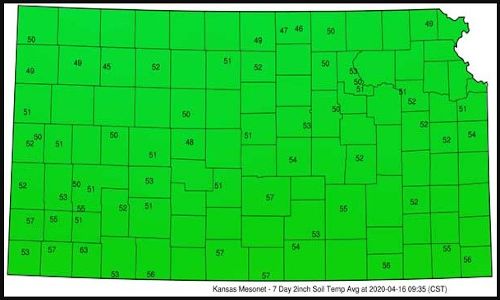

Figure 1. Average soil temperatures at 2-inch (upper panel) and 4-inch (lower panel) soil depth for the week of April 10 – 16, 2020.
Daily soil temperature variation within the last week (7-day report) was recorded across Kansas for several locations (Figure 2), presenting variations around 20oF. There has been a fairly steady pattern across the state, with the steepest change visible in northcentral Kansas at the Mitchell station. Soil temperatures were above 70oF by Saturday, April 11, in several locations, before dropping to at or less than 45oF on Thursday, April 16 (Figure 2).
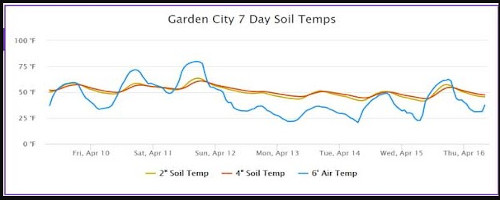
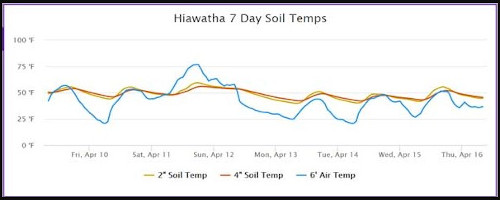
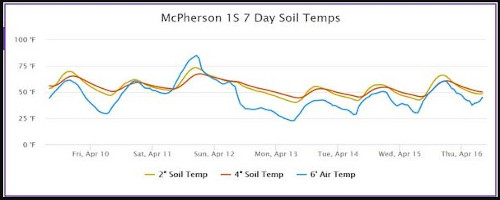
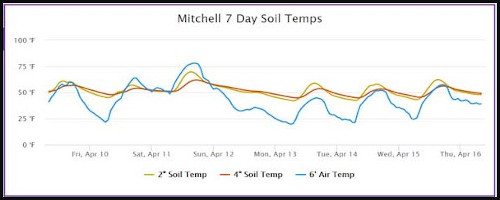
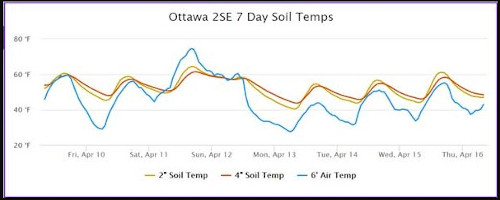
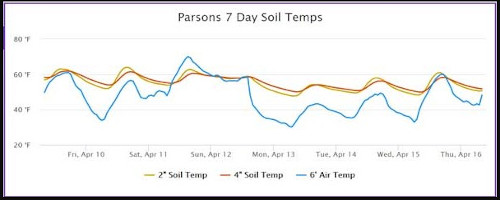
Figure 2. 7-day soil temperatures (2- and 4-inch soil depth) for Hiawatha, Ottawa, Parsons, Mitchell, McPherson, and Garden City. 2-inch depth represented by yellow line; 4-inch depth represented by orange line; air temperature by blue line. Graphs produced by the Kansas Mesonet.
Chilling injury to seeds
Cold temperatures can result in injury to the germinating seed as it is absorbing moisture – a problem called imbibitional chilling injury. Damage to germinating seeds can occur when soil temperatures remain at or below 50 degrees F after planting.
Soil temperatures at the 4-inch depth during the first 24-72 hours after planting are critical. It is during this window that the kernels imbibe water and begin the germination process. Kernels naturally swell when hydrating – taking in water. If the cell tissues of the kernel are too cold, they become less elastic and may rupture during the swelling process, resulting in “leaky” cells. Injury symptoms may include swollen kernels that fail to germinate or aborted growth of the radicle and/or coleoptile after germination has begun.
Chilling injury can also occur following germination as the seedlings enter the emergence process. Chilling injury to seedlings can result in:
- Reduced plant metabolism and vigor, potentially causing stunting or death of the seminal roots
- Deformed elongation (“corkscrewing”) of the mesocotyl
- Leaf burn (Figure 3)
- Delayed or complete failure of emergence, often leafing out underground
- Chilled seedlings may also be more sensitive to herbicides and seedling blights.
Before making any decisions, fields should be scouted 4-7 days after the cold occurred since the extent of the damage and potential for new growth will be evident during this time.
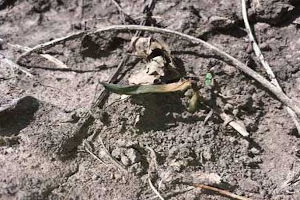
Figure 3. Leaf burn from freeze damage early after corn emergence. Photo by Ignacio Ciampitti, K-State Research and Extension.
Producers should consider all these factors when deciding on the planting time. More information about the planting status of summer row crops will be provided in upcoming issues of the Agronomy eUpdate. Stay tuned!
Source : ksu.edu